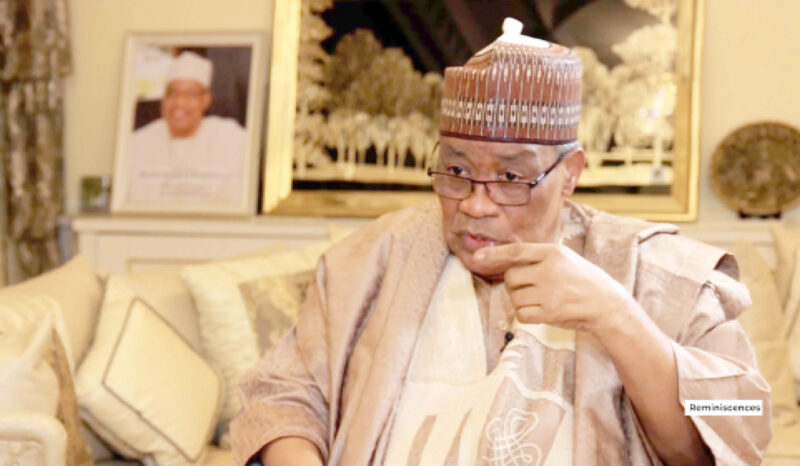Every August 17, the Nigerian media undergoes the Stockholm syndrome ritual of publishing birthday messages celebrating the life of one of the most controversial figures in Nigerian history, General Ibrahim Badamasi Babangida, who this year turned 84.
A lot has been said about his governance of the country and controversial decisions while in power. Today, however, I choose to focus on his love-hate relationship with the press and the lasting impact both have had on each other.
I have always believed that the Nigerian press, in its thundering defiance and occasional lamentations, mirrors the soul of our nation. And if you seek the perfect tempest that defines the Nigerian media’s complex relationship with power, look no further than IBB’s era. From lofty promises of openness to the thesis of control by covert strikes, Babangida’s dance with the Nigerian press was one part master class, one part magic trick — sometimes sharp criticism, other times outright would-be suffocation. It is like watching a fire dance, in which the spectacle mesmerises both the audience and spectators, and masks the infliction of pain and torture by the dancers.
SPONSOR AD
IBB, thanks to insights from his media interviews and most crucially his recently published memoir, A Journey in Service, reveals IBB’s three perceptions of the press. First, he sees the media as catalyst for open governance and human rights. Second, the media as an adversarial and critical force and third, Media as Propagator of Information and Misinformation. In each of this phases, General Babangida approached the media differently.
First, as catalyst for open governance and human rights, when Babangida first seized power in 1985, after General Buhari’s caustic relationship with the press and Nigerians, he faced the Herculean task of convincing Nigerians that military rule could coexist with the acceptable authoritarianism he was trying to establish. His initial overtures towards the media were surprisingly generous: he struck off the infamous Decree No. 4 of 1983, the very legislation that muzzled press freedom under Buhari’s regimes, throwing open the jail doors for high-profile detained journalists like Nduka Irabor and Tunde Thompson of The Guardian. This gesture was touted as a “commitment to human rights.”
Babangida professed the noble belief that a freer society would inevitably require a free and accessible press. This almost Shakespearean paradox of military governance promoting “openness” was eagerly broadcast: Babangida granted no fewer interviews than any Nigerian leader before or since, courting the media rather enthusiastically. If Nigerian journalism was a caged bird under previous military rulers, Babangida promised it a tempered golden cage — not exactly singing from the rooftops, but no longer silent.
For a while, the press enjoyed the illusion of warm embrace. Babangida even liberalised the broadcasting sector, allowing private radio and TV stations, breaking the government’s near-monopoly. New voices sprang up, new creativity flowed, and Nigerian airwaves buzzed with the promise of competition and quality.
But here’s the rub: coming from a man steeped in military strategy and cunning, this camaraderie with the press had a chess player’s subtlety. Liberalisation was carefully measured — and so was what the government tolerated beyond the glow of official announcements.
- Media as an adversarial and critical force
The Nigerian press, historically steeped in a culture of adversarial journalism, didn’t exactly turn a blind eye to Babangida’s limitations. Far from being lapdogs, newspapers quickly sharpened their pens — and cartoons — skewering policies like the Structural Adjustment Program (SAP) which Babangida’s administration pushed unapologetically. I remember those iconic comics: the exaggerated necks symbolizing the public’s aching swallow of austerity. The editors didn’t hold back because politics sells papers, after all.
Yet, this relationship was strained. As Babangida himself noted, many within the military command circle and even among political heavyweights regarded such independent media criticism as a personal affront. Some leaders recoiled at Babangida’s media openness, fearing its potential to destabilise the fragile regime. There was palpable outrage in the barracks, culminating in threats of resignation from senior military officers and a venomous press onslaught labelling Babangida as a “power-hungry dictator.”
The press didn’t just criticize policy alone; it questioned the very legitimacy of Babangida’s prolonged rule, especially as he danced around extending his stay as power broker.
- Media as propagator of information and misinformation
In the swirling chaos of Nigeria’s late 1980s and early ‘90s politics, the press also inadvertently became a propagator — not just of hard news but of rumours, half-truths, and sometimes outright misinformation. The competitive scramble among newspapers for scoops bred a marketplace where editorial lines blurred. Headlines grew more dramatic, narratives sometimes less scrutinised.
At the same time, the government learned to master the art of selective press freedom. While allowing critical voices, it also co-opted media organs. The launch of government-friendly outlets, clandestine press monitoring, and the use of “brown envelopes” to sway reports ensured the government’s version of truth maintained prominence.
This duality was, perhaps, Babangida’s greatest wizardry: dismantle one oppressive decree (No. 4), then, resurrect media control through a proliferation of lesser-known decrees and subtle regulations. It was a strategic “Maradonic” move — dazzling defenders by striking off the notorious measure, then slipping others in unnoticed.
The beginning and end of Babangida’s media policy: A tale of decrees
Babangida’s regime began with a promise of renewal — releasing detained journalists and abolishing the infamous Decree No. 4. Yet, the regime’s later phase was marked by legal camouflage, imposing new decrees that quietly reinstated media censorship and repression. The difference? These new decrees bore less catchy names, flew under less publicised flags, but served the same stifling purpose.
Between 1988 and 1993, a patchwork of decrees effectively reintroduced the machinery to sanction, seize, or shut down newspapers deemed antagonistic to the regime. The government’s regulatory agencies, such as the Nigerian Broadcasting Commission (NBC), were vested with powers to license and control broadcast media tightly — a gap soon filled with broadcasting licenses awarded to friendly parties.
The 1993 media proscription: Dimming the pretend openness
The climax of Babangida’s media dance was the 1993 proscription of the press following the annulment of the June 12 presidential election—a watershed moment in Nigerian democracy. The government banned key newspapers — Newswatch, The Guardian, The Concord Group, Punch, among others — silencing the independent voices most critical of the annulment and military rule.
It wasn’t just an opportunistic crackdown; it was a calculated final nail to the coffin of meaningful press freedom under Babangida. The new decrees — Nos. 33, 35, 43 — disguised under the legal guise of “Defamation,” “Public Safety,” or “Offensive Publications” decrees, gave the regime sweeping powers to suppress dissent without judicial oversight.
This phase saw many journalists jailed, newspapers shut, and the press driven underground or into exile. Those once welcomed into Babangida’s media mix now faced relentless persecution.
Conclusion: Babangida and the Nigerian press — A love-hate tango
The relationship between Ibrahim Babangida and the Nigerian media was not a tale of absolutes but of paradoxes. He courted the press like a suitor at first — holding interviews, liberalising the broadcast space, releasing detained journalists. Yet beneath the duets of rhetoric lay a calculated control over the narrative and dissent.
His policy illustrates a classic authoritarian formula: offering freedom as a carrot, wielding repression as a stick, and frequently using one to distract from the other. Deregulation was real, but bounded; openness was partial, often performative.
As Babangida himself admitted, he might be the most interviewed Nigerian leader ever, but that visibility came with vilification and a legacy of mistrust. The Nigerian press’s adversarial spirit survived, however — adapting, resisting, satire in hand — and became the frontline crucible for democracy’s eventual resurgence.
And that’s the punchline worth remembering: even the most meticulous “Maradonic” move to silence the press can’t cage the Nigerian journalist for long. The clock of history ticks to a rhythm where truth, though sometimes muted, rarely stays imprisoned indefinitely.


